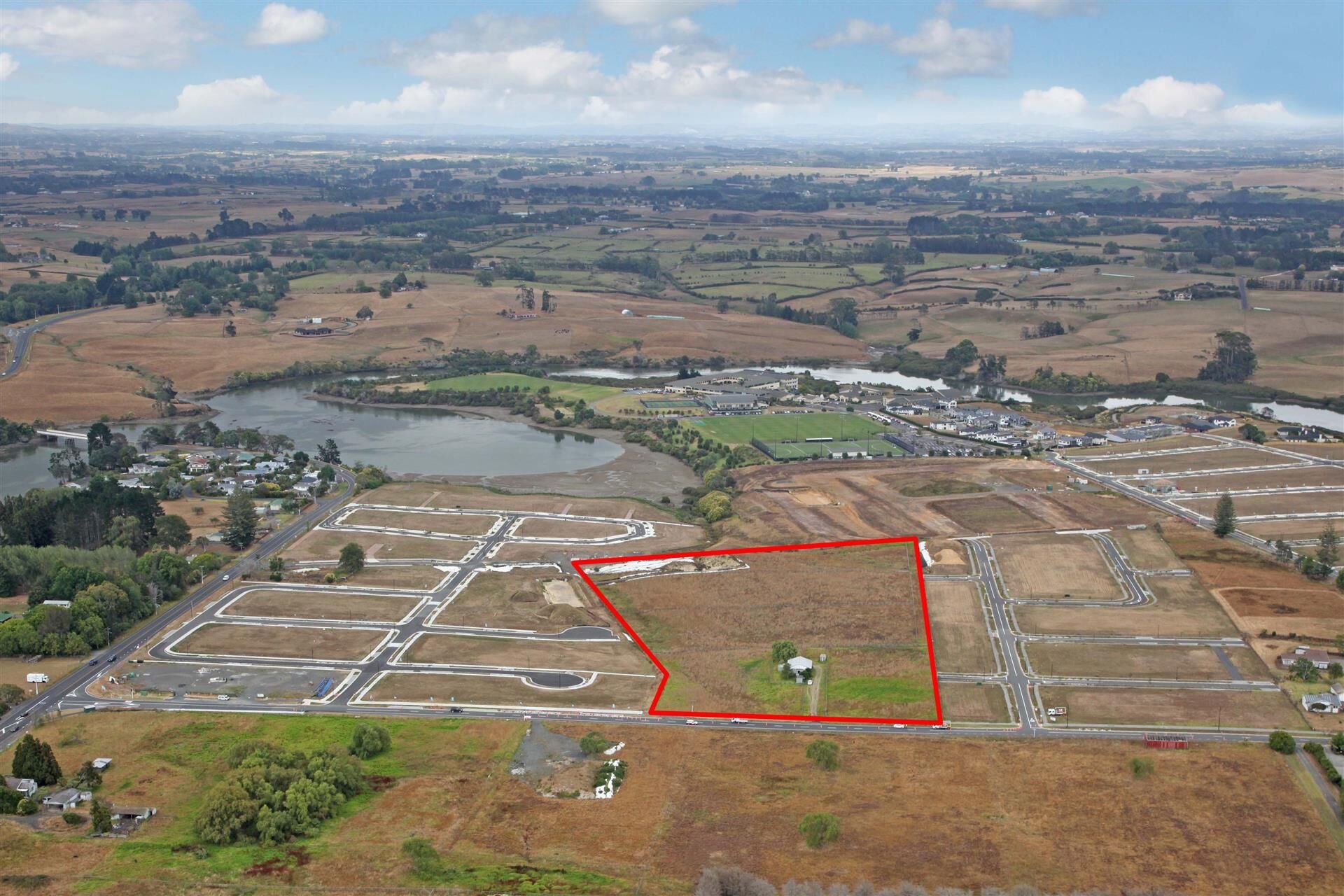Infrastructure assets surround residential development landholding on the market for sale

A substantial block of residential development land zoned for mixed use housing intensification on Auckland’s Southern outskirts – and bordered by multiple infrastructure assets - has been placed on the market for sale.
The 4.155 hectares of freehold flat land at Karaka is located within a fast-growing residential enclave just a short walk from ACG Strathallan school, a new Hilton hotel nearing completion and scheduled to open this year, and a sizeable new retail shopping hub.
The generally-rectangular site for sale at 36 Oakland Road in Karaka is zoned Mixed Housing Suburban under the Auckland Council Plan – allowing for potential subdivision into at least 120 new residential sections.
The property is being marketed for sale by tender through Bayleys Papakura, with tenders closing on February 10. Salespeople Peter Sullivan and Kristina Liu said that with an extensive frontage onto Oakland Road, the greenfield site allowed for a ‘blank canvas’ subdivision for any configuration of section plans.
Mr Sullivan said such sizeable blocks around Karaka were keenly sought-after by developers looking to dovetail their projects behind Auckland Council’s vision for the region - in an area close to State Highway One, and where existing new homes were already selling in upper price brackets.
“The 4.155-hectare block for sale at 36 Oakland Road continues the housing intensification pattern currently being experienced in the wider Karaka locale. At the end of last year for example, Bayleys Papakura sold a comparable 2.291-hectare block in the same street for more than $9million – equating to $400 per square metre,” he said.
“The Auckland Council Plan Mixed Housing Suburban zone is the most widespread residential classification in Greater Auckland - covering many established suburbs and some greenfield areas such as many parts of Karaka. Much of the existing development in the zone is characterised by one or two-storey, mainly standalone buildings, set back from site boundaries with landscaped gardens, and it is envisaged this tone will continue in the likes of Oakland Road.
“The zone enables intensification, while retaining a suburban character and allows for a variety of dwelling types and sizes to provide housing choice. The height of permitted buildings is the main difference between this zone and the Residential – Mixed Housing Urban Zone.
“The fundamentals of the Mixed Housing Suburban zone are to create safe streets and public open spaces, deliver not only visually aesthetic dwellings but also allow for privacy and sunlight, and to allow individual dwellings to have a high quality of living environments within each individual property.”
Auckland Council’s advisory notes on Mixed Housing Suburban zone developments stipulate that at least 40 percent of the property’s use must be in lawns or gardens – to provide for environmentally-conscious outdoor living areas or views from within the home.
Karaka is one of 15 Greater Auckland outer urban settlements identified by Auckland Council in its Future Urban Land Strategy paper published in 2017 – alongside the likes of Silverdale, Red Beach and Hatfields Beach to the north of the city, and Clevedon, Kingseat, Clarks Beach, Glenbrook Beach and Patumahoe to the south of the city.
Ms Liu said that with Auckland’s population projected to reach more than 2.4 million residents by 2047, there was capacity for up to 400,000 new dwellings to be built in those locations – turning them from rural settlements into stand-alone urban townships.
“As part of a quality compact approach to growth, Auckland Council anticipates that up to 70 per cent of new dwellings will be built within the existing urban area and up to 40 per cent outside of this in locations such as Karaka,” Ms Liu said.
“The Auckland Plan stresses the importance of providing a pipeline of land supply in both brownfields and greenfields – such as Oakland Road. The southern boundaries of Greater Auckland make up the largest proportion of future urban areas in the metropolis – totaling some 45 percent.
“Creating good quality places in accordance with the Auckland Plan will be achieved by selecting areas such as Karaka that connect new communities in close proximity to existing social infrastructure and services, delivering economies of scale as larger areas can be more readily planned with a full range of land use that a community needs, and safeguarding enough business land to support and balance residential supply.”
Similar sentiments were expressed in Infrastructure New Zealand’s 2017 discussion paper entitled: Meeting Auckland’s Growth Challenge: The Innovation City which highlighted that “The south represents Auckland’s opportunity to grow the city affordably and efficiently.”
“Property investors know the city will grow and they know there is money to be made betting on future zoning. Speculation is driving up the cost of land every week and reducing the ability to leverage land values to deliver affordable housing,” said the Infrastructure New Zealand report.
Fee-paying ACG Strathallan school just a few hundred metres away from the Oakland Road development site for sale runs co-ed’ classes for primary, intermediate and high school students.
Meanwhile, in the other direction also within walking distance, the Karaka Centre Hingaia is under construction to become the emerging suburb’s neighbourhood shopping and food and beverage hub - with some 43,000 square metres of commercial outlets eventually trading on completion.

